The Maxxis Ravager comes to us as the slightly bigger brother of the Maxxis Rambler, a tyre we reviewed earlier in the year. The Rambler shrinks down a little to 700c x 38mm in width for late 2016 / 2017, while the Ravager is the fully monty 700c x 40mm size.
Touted by Maxxis as an “aggressive gravel tyre” and falling under their Gravel / Adventure range of tyres, the Ravager is “at home on singletrack trails and gravel roads”, and “optimal for off-road touring and adventures”. So far, that sounds pretty good.
The Ravager features “raised square-edged center knobs to provide climbing and braking traction on moon dust covered trails”.
“Oversized cornering knobs keep you and your gear out of the dirt to conquer another turn”.
Available in two models:
- 60TPI version with Maxxis Silkshield puncture protection, EXO sidewall protection technology, tubeless readiness and a manufacturer’s claimed weight of 530 grams.
- 120TPI version with Maxxis EXO sidewall protection technology, tubeless readiness, and a manufacturer’s claimed weight of 485 grams.
Weight
The sample Ravager tyres we received weighed less than the claimed 485 grams for the 120TPI versions, at 469 and 473 grams respectively. Rotating weight at the furthest point of the wheel – rims and tyres – is always the nicest kind to save. Nice one Maxxis.
Mounting the Maxxis Ravager
Unfortunately, all attempts to mount the Ravager using the Topeak Joe Blow Booster pump failed – but this is the same story with the Maxxis Rambler. The casing fit loosely onto our sample wheelsets – NoTubes Alpha 340 rims with Dura-Ace hubs and a Novatec carbon rimmed non-tubeless specific wheelset. With a compressor, the Ravagers mounted easily and held air sans sidewall leaks.
For tricky tyres, check our mounting guidelines below:
- Some rims may require a second layer of tubeless tape for success. Some wheelsets, such as those made by American Classic, come with base tape installed. We have found their base tape to be more than adequate out of the box, not requiring additional layers of tape.
- Be sure the tyre is properly seated around the valve area. If the tyre is a little stubbon to situate itself properly, remove the valve core nut, push the valve core up towards the top of the tyre and pull back down again. This should seat the valve within the confines of the tyre casing. Don’t forget to re-install the valve core nut and tighten appropriately.
- Always dry mount the tyre first sans sealant, to ensure it will seat and hold air. If a tyre proves tricky to inflate, remove the valve core and try again. If this doesn’t work, apply something like Sleek Beeswax & Mink Oil Furniture Polish to the sidewall. This product is far better than soap and water, and will help seat even the most stubborn of tyres. This product can be purchased from your local furniture store or online.
- Once the dry mount test has been passed, install your favourite sealant and inflate.
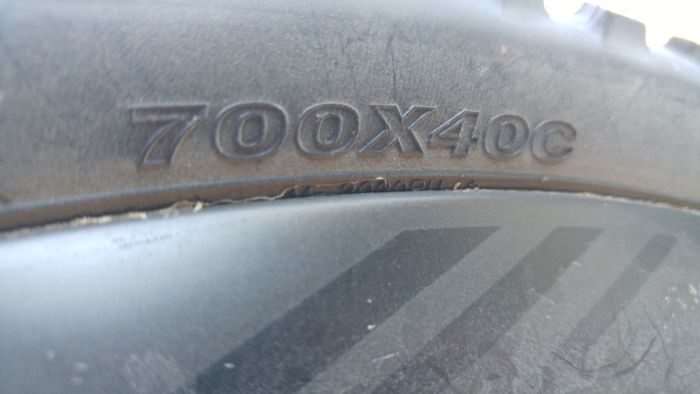
Is the Maxxis Ravager really 40mm Wide?
Mounted on the following wheels and rims at 40psi they measure:
- NoTubes Alpha 340 rim, 17mm internal – 39.1mm – 39.3mm.
- Novatec carbon rim, 19mm internal – 39.7mm – 40.1mm.
- American Classic MTB Race 29’er rim, 21mm internal – outermost corners of large side knobs: 40.9mm to 41.7mm depending on wear. Maximum width of casing, 40.3mm to 40.6mm. This piece of data was supplied by Lee Henson.
The Maxxis Ravager tyre is directionally sensitive, so take note of the sidewall marker.
Riding the Ravagers
Lee Henson, friend of the Gravel Cyclist crew and Top 5 finisher at the 2016 Dirty Kanza 200 in the single speed class, has racked up over 1,400 miles on the Maxxis Ravagers. Lee had some involvement with the Maxxis engineers during the prototyping phase and has put the Ravagers through the wringer on every surface imaginable. Incidentally, the prototype Ravagers went straight to production sans changes.
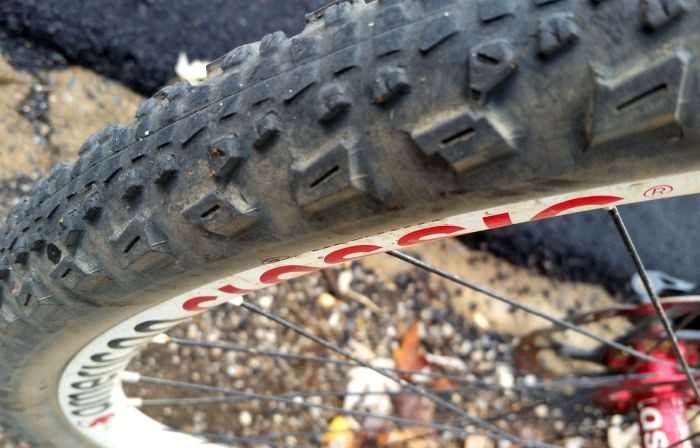
First up is Lee’s take on the Ravagers…
Both tires were setup with three ounces of Orange Seal sealant per wheel. I have had no punctures despite taking them over some of the rockiest terrain the mountains of North Georgia have to offer. Of the 1,400 miles covered, I would estimate roughly 35% to be paved (to get to or connect the gravel of course!), and approximately 55% to be primary forest service roads (think Southern Cross) or county maintained crusher run gravel roads.
The remaining 10% includes virtually every other non-paved surface imaginable; rooty single track, off camber rocky double track, rutted red clay jeep trails, fist sized gravel secondary forest service roads, creek bottoms, abandoned golf courses (shhhh… don’t tell anyone), sandy trails, oyster shell roads, free ride park… and the list goes on. As for the non-paved surfaces, there are only two conditions I can think of that I haven’t ridden on. That would be deep sand (JOM has that covered) and deep mud.
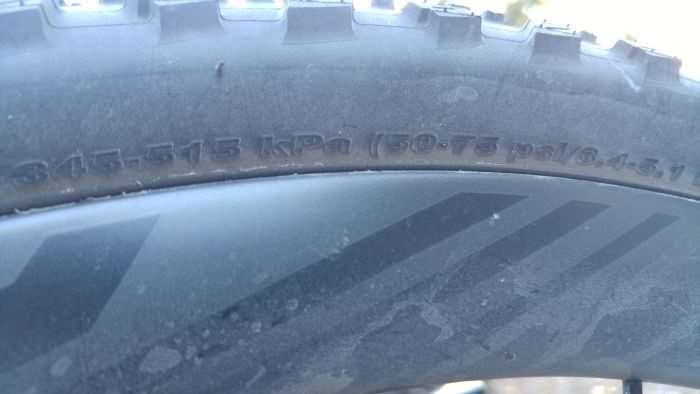
Grades: Some steep grades can be found in North Georgia, especially on the smaller gravel roads. I’ve been able to climb some loose gravel grades topping out around 27% without slipping a tire. I’ve also had the tires running close to 50mph on paved descents. Coming into a corner holding 45mph, you can feel the tires squirm a little, but one would completely expect that. Now that the center of the Ravager’s tread has been worn down on the rear, there is not nearly as much traction. I find myself slipping more like you would on a Maxxis Rambler forcing me to stay seated when climbing.

Comparison in rolling: When I first mounted the tires I noticed a slight buzz to them on smooth pavement. In my mind this equals inefficiency and thus greater rolling resistance. Over the course of the last few months I’ve had the opportunity to ride next to other folks running various cyclocross and gravel oriented tires. Everyone has a different aerodynamic drag to weight ratio and runs their tires at differing pressures on different rims, but all things being considered, I seemed to be able to coast down paved hills and smooth gravel on the Ravagers almost as well as anyone else riding similar 40mm knobby tires – Clement X’plor MSO, Maxxis Ramblers, Specialized Triggers, etc. In many situations I felt more confident descending gravel and dirt surfaces due to the greater control the larger knobs offered up front.
Ride feel: Almost akin to the Maxxis Ramblers but a tad stiffer – possibly due to the thicker knobs? They track through really loose gravel about the same as Ramblers. Tracks through light / shallow sand or loose dirt a little better than Ramblers – probably due to the outermost angled side knobs.
Unique strengths: Standing traction – great on the rear for single speeders or if you like to stand when climbing a lot, off chamber traction on dirt or rocks due to the large side knobs, increased braking ability on packed gravel or dirt. Better tracking and cornering on dirt. If you could have only one bike for gravel roads, I would strongly think about a Maxxis Rambler on the rear and a Ravager on the front. In fact, the Maxxis engineers told me they recommended and designed the Ravager for this exact combination. However, I think we should all have a minimum of three levels of gravel bikes! GB (where GB = gravel bike) + 1.
Shortcomings: Doesn’t shed mud very well due to the tight spacing and deep lines between knobs in the center of the tread. A touch slower on pavement, costing a rider a couple of watts?
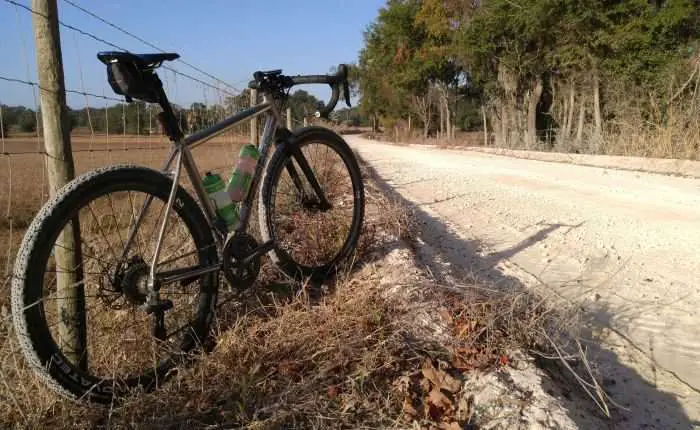
JOM’s take on the Ravagers…
For testing on both wheelsets, the Ravagers were inflated to 36psi front, and 38psi rear. I ignored the side label recommendation of 50psi – this would only result in a hard as nails ride. In both cases, two ounces of Orange Seal’s Endurance formula sealant was installed.
Grades: I don’t have the steep and long climbs of North Georgia available to me at the drop of a hat, but I have many dirt and gravel power climbs on which to test near my USA hometown of Gainesville, Florida. I prefer to remain seated for almost all of my climbing efforts, no matter how long or short the grade, and the Ravagers maintained traction well. On a 12% grade while riding hard out of the saddle, the Ravagers did a nice job of sticking to the ground, only skipping once or twice on a couple of patches of hard limerock surface. On the following short descent, they were a pleasure to bomb at 35mph over the rough gravel road, instilling confidence.
Important to note – the Novatec carbon wheelset pictured above is not a tubeless specific wheelset. They came to me on the Litespeed T5G gravel bike I am currently reviewing. I fitted the wheels with one layer of NoTubes tape and valve cores – not designed for the task, this wheel and tire combination has worked well together.
Comparison in rolling: Just as Lee experienced, I noticed the buzzing of the Ravagers on smooth pavement. Compared to the older Maxxis Ramblers (the latest models are now 700c x 38mm), the Ravagers didn’t feel as responsive as the lighter Ramblers, which weigh almost 100 grams less per tire. Initially, the Ravagers felt sluggish to me, at least on a paved surface, but it didn’t take long before I was rolling on gravel, and the tyres began exhibiting the qualities they were designed for. Soon, my thoughts of sluggish performance were forgotten about, and the Ravagers felt much like any other gravel tire of a similar size at the same speed in a straight line.
The Ravagers excel in the corners – even better than the Ramblers – the larger center knobs and oversized knobs on the edge of the tyre do a great job of maintaining traction when leaning the bike over. Just don’t lean too aggressively – unlike pavement, gravel is looser and thus not so forgiving – this applies to any gravel tyre.
Ride feel: Similar to their brethen, the Ramblers, but more so to other tyres of a similar weight, especially when accelerating the bike. Most of us seem to sit and chug along on gravel, so this is almost a moot point. The Ravagers definitely feel more solid “underfoot” versus the Rambler, which is light, but potentially quite fragile. The Ravagers have great manners in loose gravel and like Lee earlier, I found they tracked well in light sand or loose dirt better than the Ramblers.
Deep sand was the undoing of the Ravager, but this is the undoing of any 40mm tyre. Sure, there is a technique for riding deep sand – it generally involves you finessing the bike and allowing it to find it’s own way through the sand. But if the patch of sand is long, it also requires power and cadence to prevent from bogging down. The photo above was taken about 85 miles into a 93 mile solo ride when I encountered a sandy forest road about two and a half miles in length. I was happy to stop and take that photo for a bit of a respite! It may be a limited market, but for loose sand, bigger is better, and I mean bigger than 40mm wide tyres. Deep sand is Monster Cross bike territory with 2″ tyres.
Unique strengths: I echo all of Lee’s opinions regarding traction and cornering. From an aesthetic point of view I don’t like to mix tyres, but Lee is spot on about the Ravager up front and the Rambler on the back. However, if I were to run Maxxis tyres at a race like the 2017 Dirty Kanza 200, where rocky surfaces are prolific during the first 100 miles, I would select Ravagers front and rear without hesitation due to their tough nature. For 200 miles of racing, I’ll take a heavier, more durable tyre any day over risking it on a lighter weight casing.
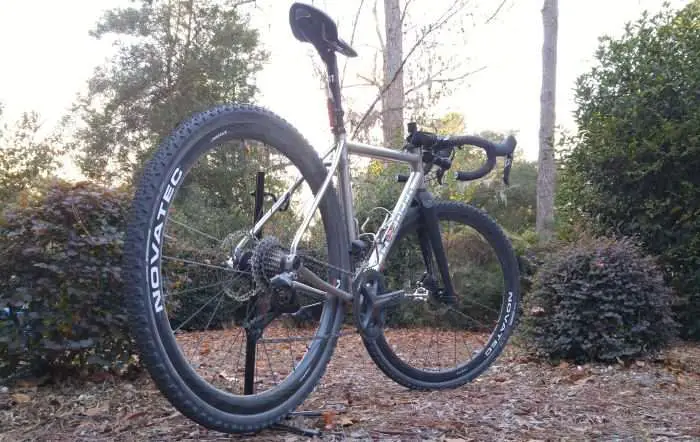
Shortcomings: I cannot speak for mud performance, but they felt slower vs Maxxis Ramblers on pavement. Bear in mind, Ravagers are meant for gravel riding, not time trailing on pavement!
Overall, this is an excellent gravel tyre, and one I would feel confident in using for courses that are bit rockier and gnarlier than usual. For something a bit tamer, there is always the Maxxis Rambler.
The Maxxis Ravager will be making its way to your local bike shop soon.
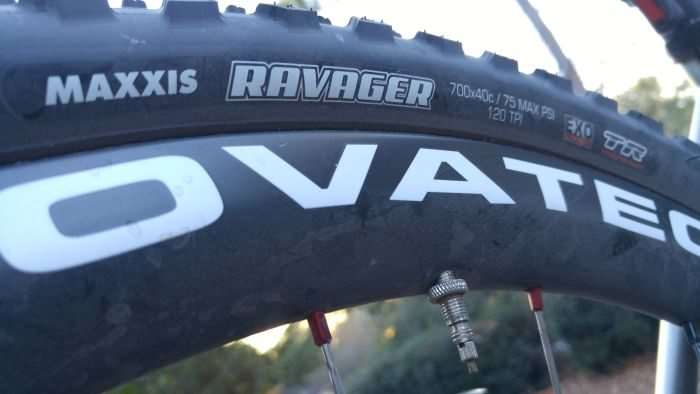
A big thank you to Lee Henson for his in-depth take on the Maxxis Ravagers!
Priced at an MSRP of $US 67.84 each for the 120TPI version, they can be had cheaper if you look around.
| 120 TPI Ravager Tyre | 60 TPI Ravager Tyre |
| Click to Buy |


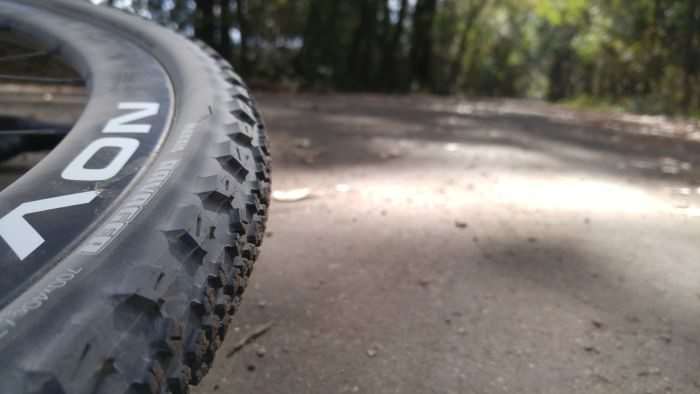
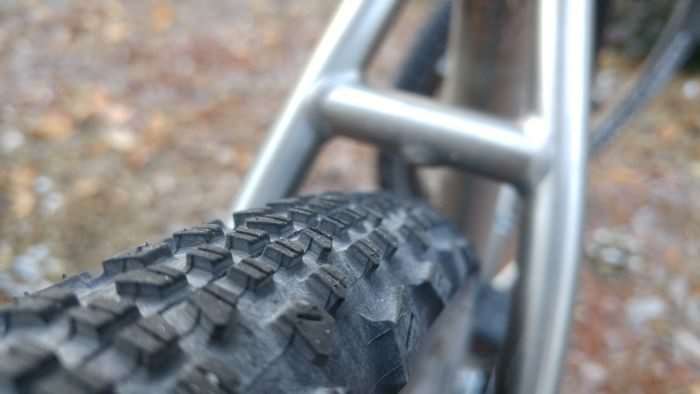
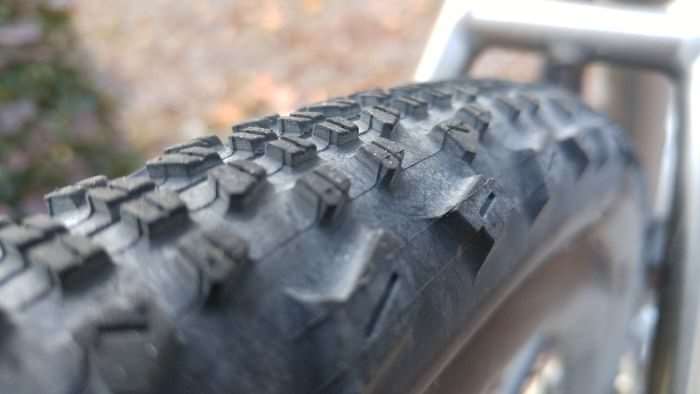
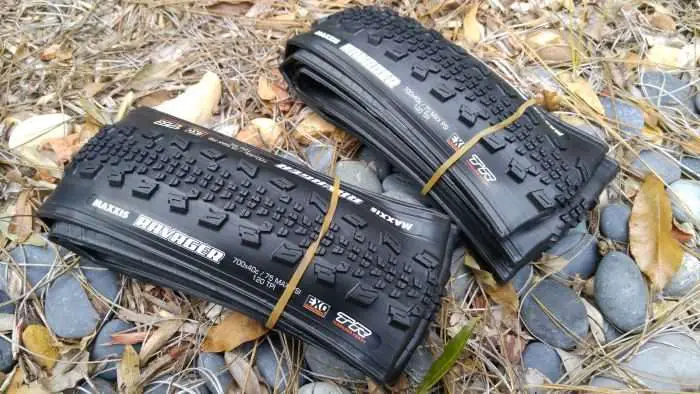
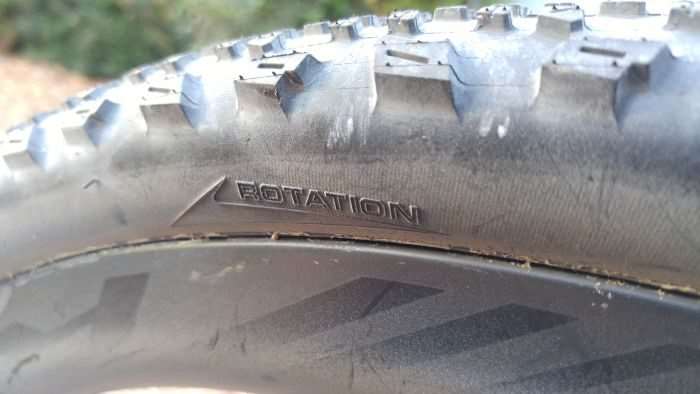
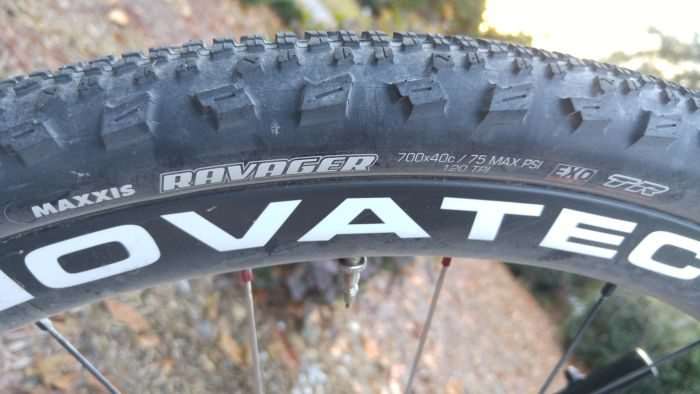
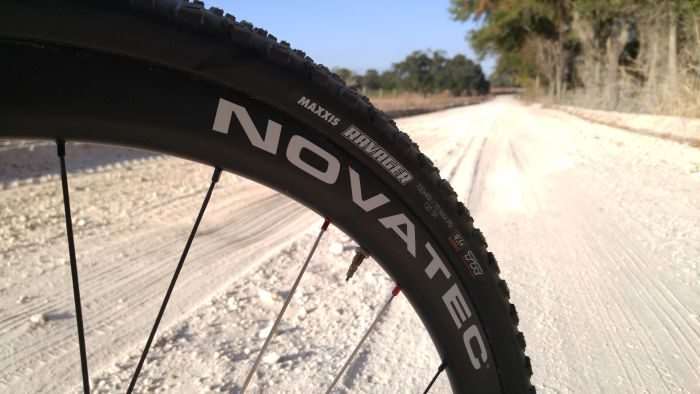
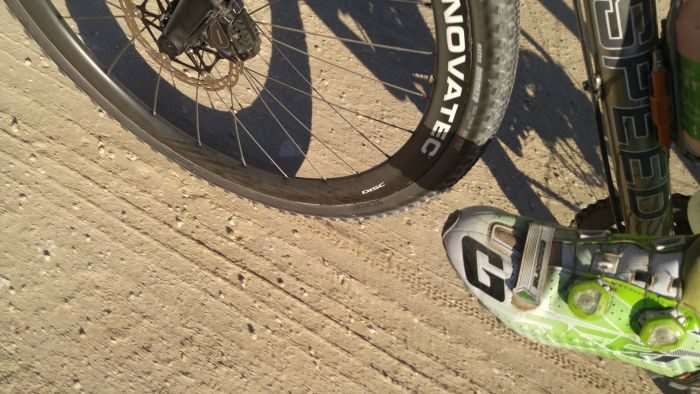
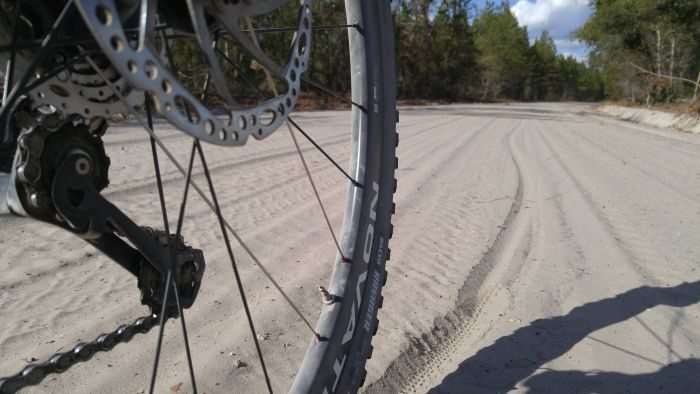
One note- Your preference for the nomenclature 700x40mm ignores the fact that the “c” in 40c actually has a technical background. The “c” indicates “crochet” which is the French term for a hook-edge rim.
Aaah, I did not know this!, thanks so much for chiming in, Tyre Guy. Edit made and credit given.
Your mounting procedures for a too-loose casing tire do not include this technique that has served my very well on a number of like encounters with loose bead tires:
-inflate with a tube inside, so that both beads seat, then break only one bead
-remove tube, install tubeless valve
-lubricate the non-seated sidewall & rim bead, then inflate as usual
I’ve successfully mounted a number of tires with this technique that were too-loose to install with my high volume pumps, or my Topeak Booster pump (great pump).
As always, YMMV, but works for me….
Hey Rico, I’ve heard of this technique but never tried it first hand. I have the luxury of access to a compressor which makes life too easy, but am really glad to hear this creative method actually works. Thanks so much for sharing it with us.
So would this tyre be your choice for the DK (100) and would you stick with the 120 tpi and why? Asking for a friend…ha ha not really it is totally about me. For serious though? I am currently running the Rambler 40 and I can’t say enough about them, kinda sad they are dropping to only 38s. That said would you pair a 38 Rambler with a 40 Ravager?
Hi JP. Last year at DK200, I ran the Panaracer Gravelking SK in 40mm. I reckon a 38 Rambler on the rear and a 40 Rambler on the front would be a great combination for DK100 if you choose to mix tyres. If I show at the 2017 DK200, I don’t know what I’ll run. Don’t you hate these first world problems?
I am definitely shaking my head a little at why Maxxis decided to reduce the Rambler to a 38mm wide tyre.
Thanks!! It is always a hard decisions on tire/tire pressure setups for these events I am sure! Thankfully there are some solid tire choices out there right now between the Maxxis and Panaracer lines as well as others. If I had to choose right now it would probably go the Ravager because of the 40mm size, I really like my Ramber 40s and don’t really want to go smaller than that at DK. I haven’t run the Panaracer’s yet, but I might give them a try when my Ramblers are due for replacement. Looking forward to my first winter gravel event this weekend (thanks for the gear tips btw – the Castelli Gabba convertible and Sorpasso Wind Bibs are money!!)
Did you try fitting these on your Ritchey Break-Away Cross Ti bike? I have 40mm Clements currently and the work ok, just wanted to confirm these would also fit?
Thanks, great site.
Hi Brent, Ramblers in 700c x 40mm fit in the Ritchey Breakaway TI CX bike without drama – although I had to temporarily shift one of the rear brake pads to allow the tyre to squeeze in. The brake pads were hard against the seat stay preventing an easy wheel swap. There was a good amount of room either side of the tyre once installed onto the bike. I haven’t tried the Ravagers on the bike, but the are virtually the same width, so I expect there won’t be any issues. If I get time to perform yet another wheel / tyre swap haha, I will post another reply.
Do you know what the measured outside diameter of these tires are?
Thanks
Sorry Andy, that isn’t a number I usually measure… and for at least the interim, the Ravagers have been removed from the test wheelset. If that changes, we’ll do our best to let you know. Thanks!
I’ve recently been riding the Ravagers set up tubeless on Stan’s Iron Cross wheels. I had no issues mounting them. Compared to the other two tires I’ve used a lot and quite like – Challenge Gravel Grinders (38mm, with tubes) and Conti CycloXKings (42’s, but measure ~38, with tubes) the Ravagers feel like they have more volume (less likely to bottom out) and are definitely more secure on soft surfaces and technical terrain. I particularly like their edge grip when cornering, on off-camber surfaces and on roots/rocks. At 170#, I can run the Ravagers at 32/34 psi F/R, which is 2-4 psi less than I need with the other two tires. On pavement, I notice a bit more noise with them compared to the GGs and a little less than with the CXKs, which is no surprise. Frankly, I don’t care, as these are off-pavement tires and the less time they spend on asphalt, the better.
For the dirt roads and trails up here in NH, they seem to be ideal. While I will keep the other tires around until they’re worn out, I think I’ve found my new go-to gravel tire.
Which would do better at Pisgah Monster CX? Ramblers or Ravagers?
Ravagers.
Would you say that a ravager in the front and a rambler in the back on a surly crosscheck would suitable for commuting around Gainesville, gravel grinding, and hitting San Felasco on occasion? I’m trying to build up a “Swiss-army knife” type of bike and would love your opinion.
They looks very nice. I’m thinking about buying them
I am sure you have said this elsewhere, but can yall recommend a brand and general price for an air compressor? I take great pride in mounting everything tubeless with a standard pump, but sometimes you gotta give in.
Josh, sorry, no recommendation for you. If I get in a bind, I head over to mate’s house for a compressor. I believe Harbor Freight sells compressors quite cheap?
Looking for a tyre that will do Cleland/ Chambers gully / to Lofty which I am sure you know well :). Don’t want to go overly aggressive though, as I would like to ride to the trail on paved roads. Thinking Ravager front, Rambler rear? Ravager front and rear? any other suggestions? Currently running the WTB byways 40cc which don’t have enough traction on such trails, particularly on the steeper sections. Great content Jom. Cheers, Hieu
That combo you suggest is pretty sweet. The WTB Resolute is another excellent choice, and it rolls well on bitumen despite being a knobby. Granted, you will hear some howling, the sound of resistance if you run it on billiard table smooth roads, but you cannot have it all!